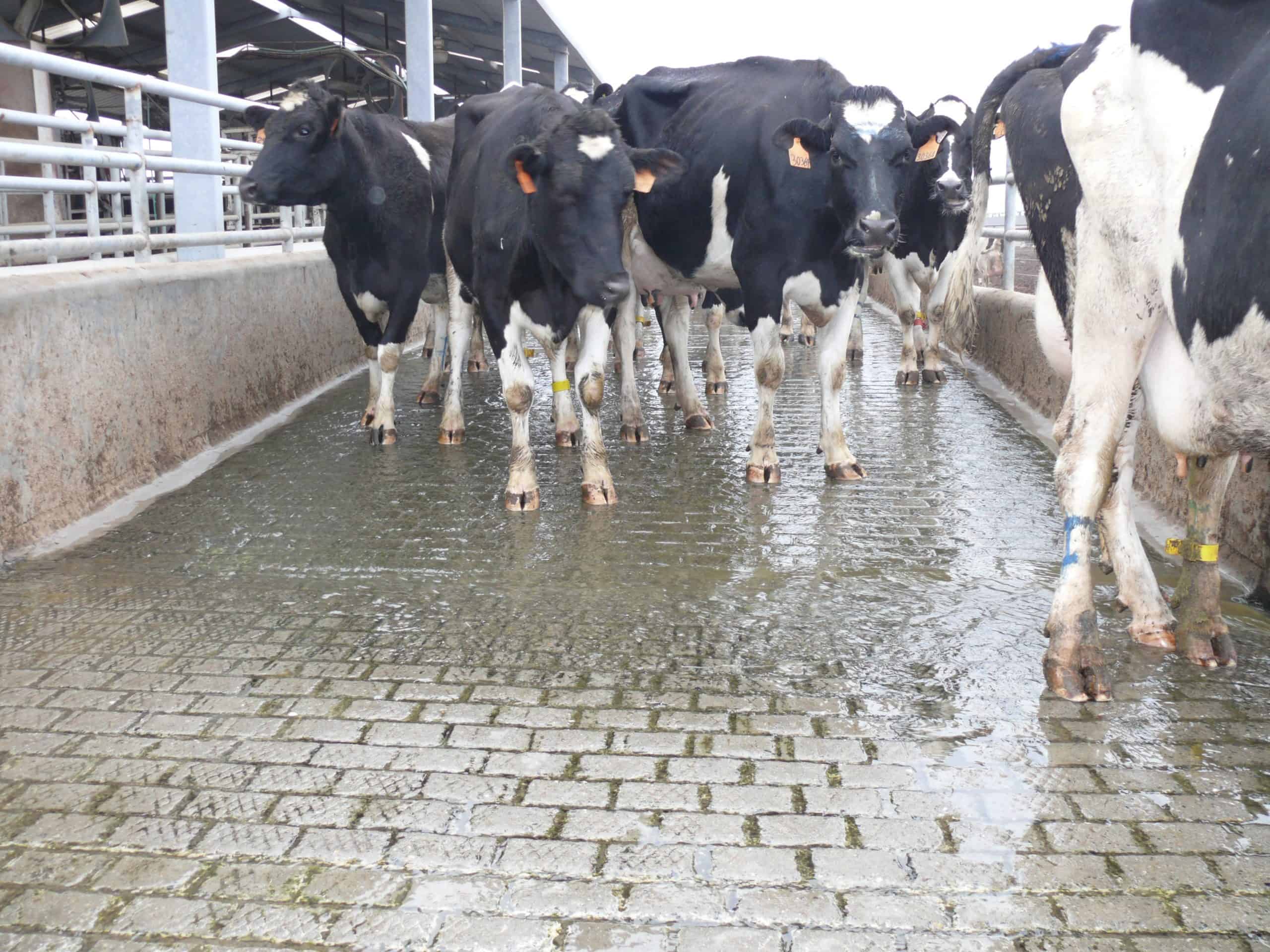
Footbaths have become a staple in dairy operations looking to treat or prevent infectious hoof diseases. But when a footbath becomes dirty or diluted, it provides no benefit and may even create additional problems. Some producers have incorporated a pre-wash into their hoof hygiene program; others aren’t sure they’re worth the time and trouble. Here are some of the most common questions regarding the use of a pre-wash in a hoof health protocol.
1. What is the purpose of a pre-wash?
A pre-wash is used primarily to minimize manure contamination of the footbath in cows with poor leg hygiene. This may help the footbath remain active longer because there is less organic matter to neutralize the cleaning agents.
2. Where should the pre-wash be located in relation to the footbath?
A pre-wash is most effective when it is located at least six to ten feet from the footbath, and is placed in the return lane at least two-thirds of the way down from the milking parlor.
3. What are the components of a pre-wash?
Some hoof experts believe a pre-wash should be just water. Others favor a soap-and-water mixture. If using a soap-and-water mixture, use one pint of dishwashing soap to every 25 gallons of water. Care must be taken to prevent slippery conditions for cows.
4. How frequently should a pre-wash be changed?
Depending on the cleanliness of the environment, a pre-wash may need to be changed at least as frequently, if not more so, than the footbath itself. While some operations with excellent leg hygiene may only need to run a pre-wash and footbath once a week, others may need to use it every day. According to University of Vermont researchers, footbath agents such as copper sulfate and formaldehyde should be changed every 120 to 200 cow passes.
5. Why would someone not use a pre-wash?
Space may be an issue, as there might not be enough room near the footbath to accumulate a pre-wash. Water may end up diluting the treatment chemicals in the footbath, requiring the footbath to be changed more frequently. Once the cow reaches the footbath, her hoof skin may not absorb the treatment solutions as readily as when it is wet. Using a pre-wash may contribute to water that will accumulate in the manure lagoon. Research also indicates that when a pre-wash is used, a cow may be up to four times more likely to urinate and defecate in the footbath, thus rendering it ineffective.
6. How does the use of chemical footbath additives impact the need for a pre-wash?
In dairies that use copper sulfate footbaths, adding chemicals that increase the potency of copper sulfate may reduce or even eliminate the need for a pre-wash altogether.
Organic matter such as manure and urine generates hydroxide ions that bind to – and neutralize — copper ions in the footbath. Chemical additives interrupt this process by binding to the hydroxide ions, leaving fewer of them available to bind to copper ions. More copper ions are therefore available for killing pathogens and promoting hoof hardness, significantly extending the life of the footbath – with or without a pre-wash.
Footbath additives are available in liquid, dry or concentrate forms, but all essentially do the same thing: allow the producer to achieve the same level of activity with substantially less copper. Some producers have been able to reduce copper usage by up to 80 percent when using a chemical additive in their footbath program. Secondary benefits include reducing copper loading on land, reducing the cost of the footbath program, minimizing corrosion issues caused by copper sulfate, and improving the overall safety of the footbath. If using a copper extending additive it’s important to use one that is properly buffered to reduce corrosive effects to skin and concrete.
Producers who like the idea of a pre-wash for hygiene reasons will find the use of a pre-wash in conjunction with a chemical additive further extends the life of their footbath. Those who prefer not to go to the trouble and expense of a pre-wash will appreciate the ability of an additive to keep right on working even in the presence of organic matter.
Because environmental conditions vary widely from herd to herd, always consult your hoof trimmer or veterinarian before making any changes to your hoof care protocol.
This article by Dale Baker appeared in the April 2014 issue of DairyBusiness East.